In AP Statistics, understanding sampling methods is essential for collecting data that accurately represents a population. Different sampling techniques, such as simple random sampling, stratified sampling, cluster sampling, systematic sampling, convenience sampling, and voluntary response sampling, each have unique advantages and disadvantages. Mastering these methods ensures that students can design studies that minimize bias and produce reliable results, which is crucial for drawing valid conclusions and making informed decisions based on statistical analysis.
Learning Objectives
By studying sampling methods, I will learn how to select representative samples from a population in AP Statistics. I will understand various techniques, such as simple random sampling, stratified sampling, cluster sampling, systematic sampling, convenience sampling, and voluntary response sampling. This knowledge will help me design studies that minimize bias and produce reliable results. Mastering these methods will enable me to draw accurate conclusions and make informed decisions based on my statistical analysis.
Definition
Sampling methods refer to the techniques used to select a subset of individuals from a population to represent the entire population. Proper sampling ensures that the sample accurately reflects the population, allowing for valid inferences and conclusions.
Types of Sampling Methods
Simple Random Sampling (SRS)
Stratified Sampling
Cluster Sampling
Systematic Sampling
Convenience Sampling
Voluntary Response Sampling
Simple Random Sampling (SRS)
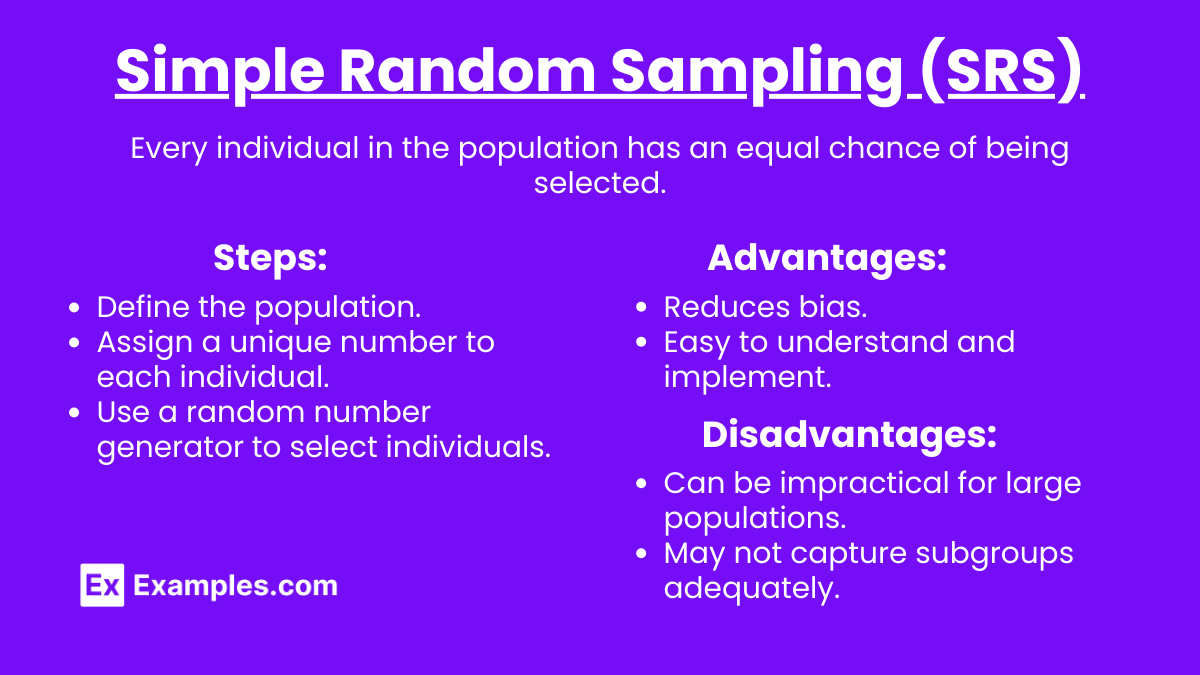
Definition: Every individual in the population has an equal chance of being selected.
Steps:
Define the population.
Assign a unique number to each individual.
Use a random number generator to select individuals.
Advantages:
Reduces bias.
Easy to understand and implement.
Disadvantages:
Can be impractical for large populations.
May not capture subgroups adequately.
Stratified Sampling
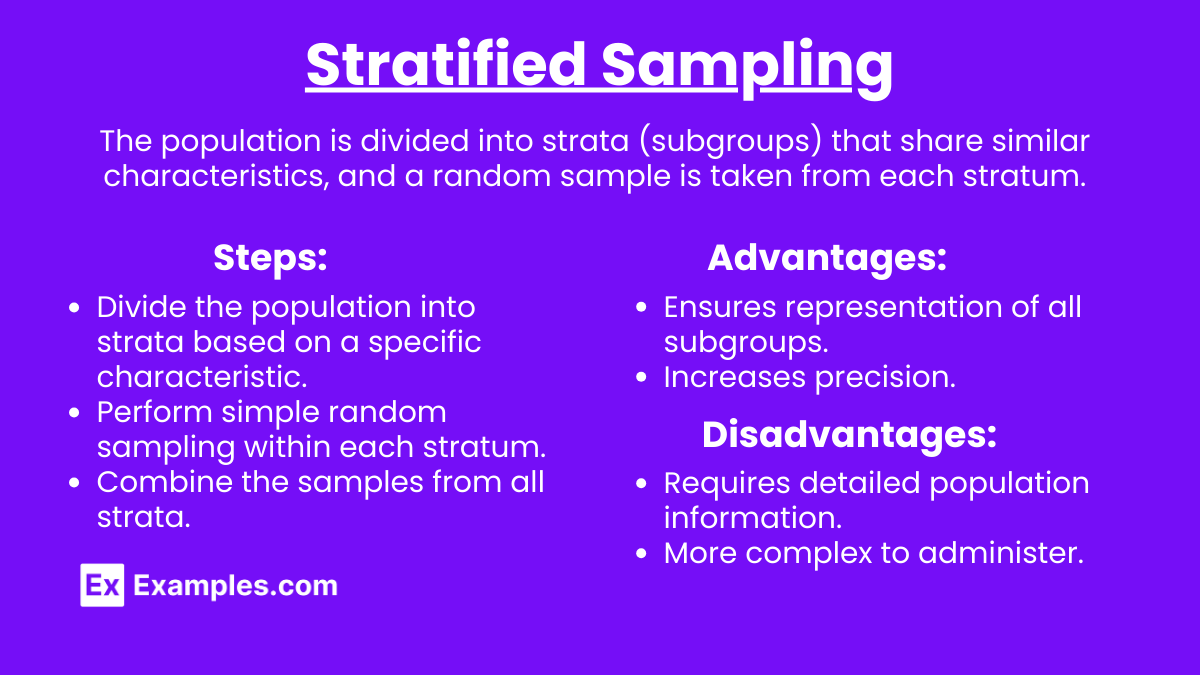
Definition: The population is divided into strata (subgroups) that share similar characteristics, and a random sample is taken from each stratum.
Steps:
Divide the population into strata based on a specific characteristic.
Perform simple random sampling within each stratum.
Combine the samples from all strata.
Advantages:
Ensures representation of all subgroups.
Increases precision.
Disadvantages:
Requires detailed population information.
More complex to administer.
Cluster Sampling
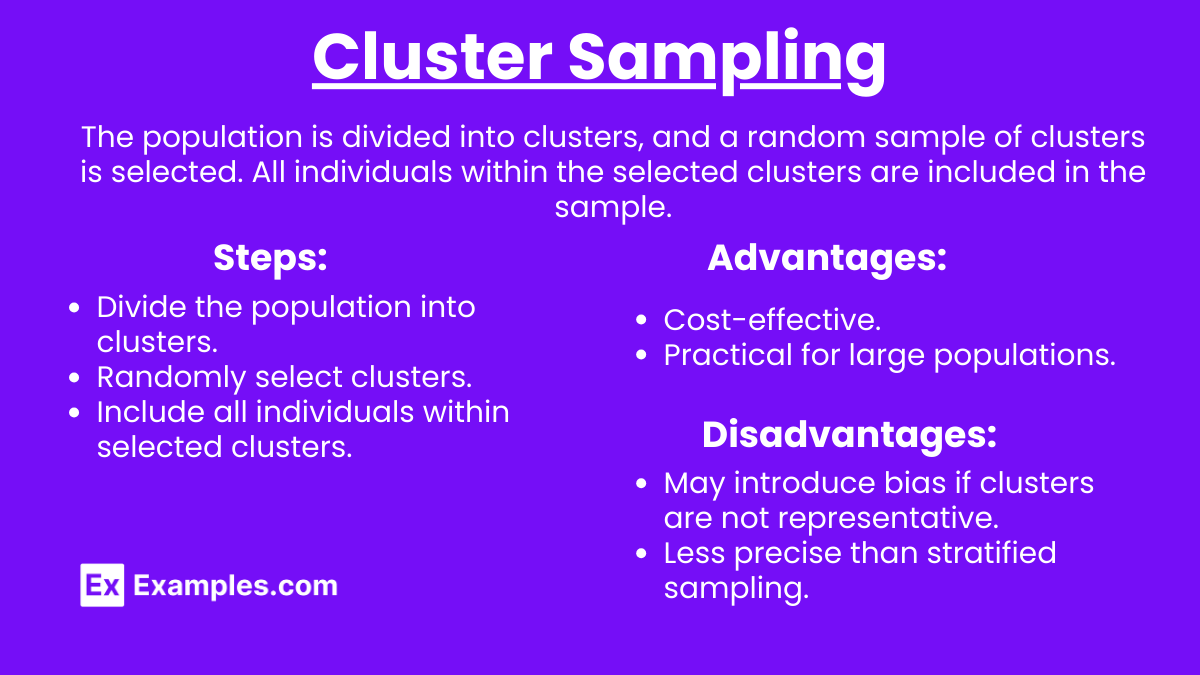
Definition: The population is divided into clusters, and a random sample of clusters is selected. All individuals within the selected clusters are included in the sample.
Steps:
Divide the population into clusters.
Randomly select clusters.
Include all individuals within selected clusters.
Advantages:
Cost-effective.
Practical for large populations.
Disadvantages:
May introduce bias if clusters are not representative.
Less precise than stratified sampling.
Systematic Sampling
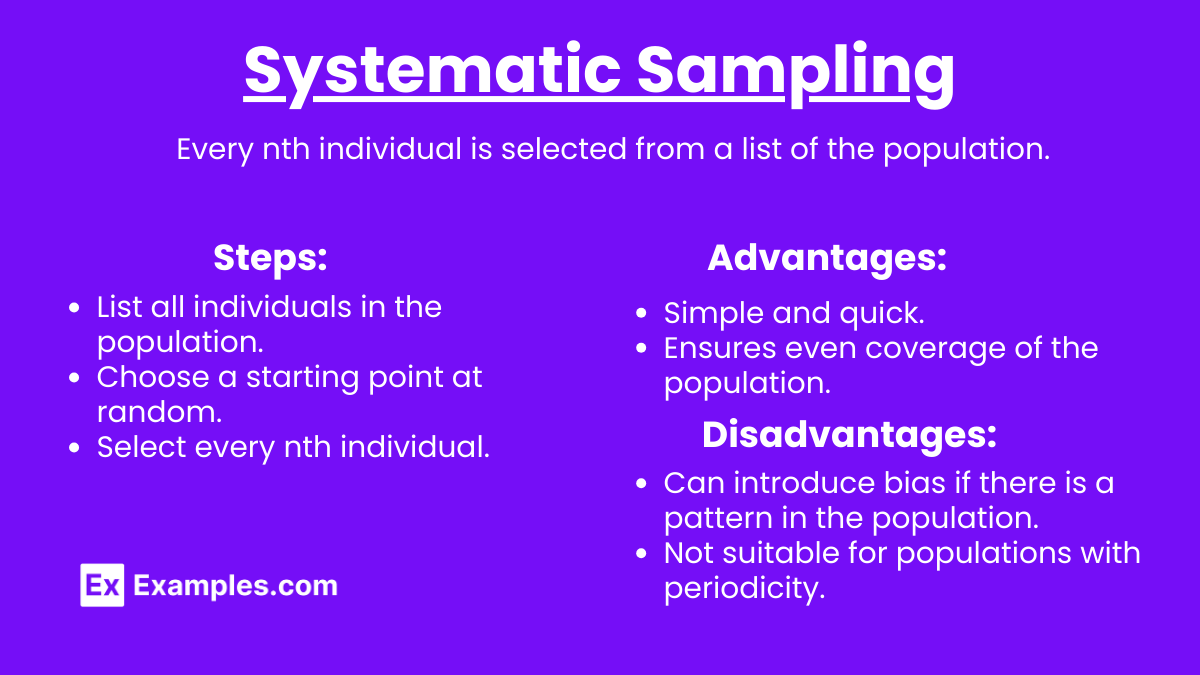
Definition: Every nth individual is selected from a list of the population.
Steps:
List all individuals in the population.
Choose a starting point at random.
Select every nth individual.
Advantages:
Simple and quick.
Ensures even coverage of the population.
Disadvantages:
Can introduce bias if there is a pattern in the population.
Not suitable for populations with periodicity.
Convenience Sampling

Definition: Individuals are selected based on their availability and convenience.
Steps:
Identify an easily accessible group of individuals.
Select individuals from this group.
Advantages:
Easy and inexpensive.
Quick to implement.
Disadvantages:
High potential for bias.
Results may not be generalizable.
Voluntary Response Sampling
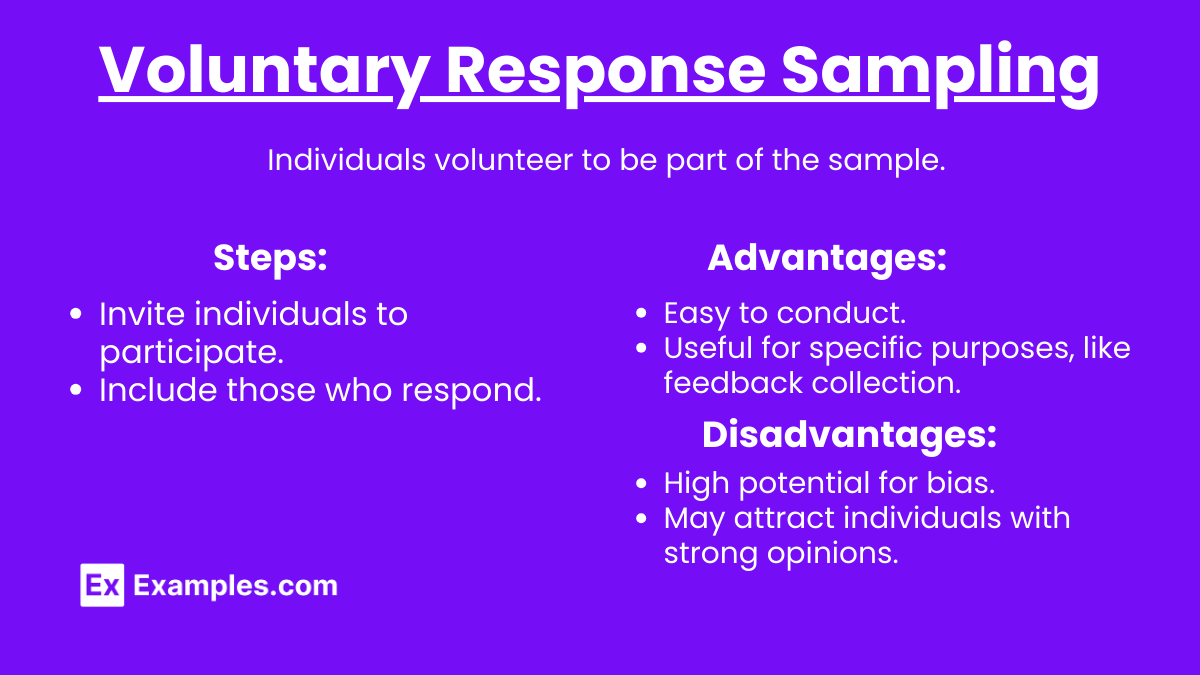
Definition: Individuals volunteer to be part of the sample.
Steps:
Invite individuals to participate.
Include those who respond.
Advantages:
Easy to conduct.
Useful for specific purposes, like feedback collection.
Disadvantages:
High potential for bias.
May attract individuals with strong opinions.
Examples
Example 1: Simple Random Sampling
Scenario: A school wants to survey students about their favorite subjects. Method: The school randomly selects 50 students from the entire student body using a random number generator.
Example 2: Stratified Sampling
Scenario: A researcher wants to study the income levels of different ethnic groups. Method: The researcher divides the population into ethnic groups (strata) and randomly selects individuals from each group.
Example 3: Cluster Sampling
Scenario: A city government wants to survey residents about public transportation. Method: The city is divided into neighborhoods (clusters), and a random sample of neighborhoods is chosen. All residents in the selected neighborhoods are surveyed.
Example 4: Systematic Sampling
Scenario: A factory manager wants to inspect the quality of products. Method: The manager inspects every 10th product coming off the production line.
Example 5: Convenience Sampling
Scenario: A professor surveys students in their class about study habits. Method: The professor selects students who are present in the class on a given day.
Multiple Choice Questions
MCQ 1
Which sampling method ensures every individual in the population has an equal chance of being selected?
Stratified Sampling
Cluster Sampling
Simple Random Sampling
Convenience Sampling
Answer: 3. Simple Random Sampling
Explanation: In Simple Random Sampling, every individual has an equal chance of being chosen, reducing selection bias.
MCQ 2
What is a major disadvantage of convenience sampling?
It is time-consuming.
It is expensive.
It has a high potential for bias.
It requires a random number generator.
Answer: 3. It has a high potential for bias.
Explanation: Convenience sampling selects individuals based on availability, which may not represent the population accurately, leading to biased results.
MCQ 3
Which sampling method involves selecting every nth individual from a list?
Stratified Sampling
Systematic Sampling
Cluster Sampling
Voluntary Response Sampling
Answer: 2. Systematic Sampling
Explanation: Systematic Sampling selects every nth individual from a list, ensuring even coverage but potentially introducing bias if there is a pattern in the population.


